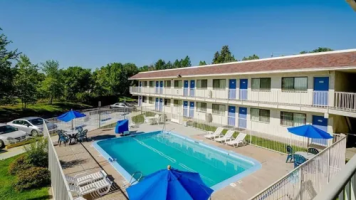jar546
CBO
Innovative Approaches to Tackle Housing Challenges: A Call for Local Leadership
Amid a nationwide housing deficit of nearly 4 million units, local governments find themselves at the forefront of addressing the crisis. A recent report, The Case for Innovation in Housing: How Local Governments Can Drive Solutions, explores transformative strategies to combat systemic barriers, increase housing supply, and promote equity in homeownership. The report emphasizes the vital role local policymakers play in creating conditions for scalable, innovative solutions.
This forward-thinking report illustrates how local governments can transform housing challenges into opportunities, fostering equity and sustainability in their communities. As policymakers navigate the complexities of housing reform, these case studies provide a roadmap to meaningful, scalable solutions.
Amid a nationwide housing deficit of nearly 4 million units, local governments find themselves at the forefront of addressing the crisis. A recent report, The Case for Innovation in Housing: How Local Governments Can Drive Solutions, explores transformative strategies to combat systemic barriers, increase housing supply, and promote equity in homeownership. The report emphasizes the vital role local policymakers play in creating conditions for scalable, innovative solutions.
Wealth Justice and Access to Homeownership
Historical discrimination, from redlining to restrictive covenants, has left minority communities with limited access to property ownership. Programs like Mixed-Income Neighborhood Trusts (MINTs) and Frolic aim to counteract these injustices. MINTs empower neighborhoods to maintain affordability while attracting investment, leveraging both market-rate and income-restricted units. Frolic, based in Seattle, transforms single-family homes into multi-family cooperatives, reducing costs for homeowners and enabling affordable down payments for new buyers. In Alaska, the Success Starts with Me initiative supports tribal communities by constructing sustainable homes and fostering financial readiness, blending traditional practices with innovative lending solutions.Bolstering Housing Supply Through Industrialized Construction
The housing shortage demands faster, cost-effective construction solutions. Industrialized methods like modular and prefabricated construction are making a significant impact. Projects such as Module’s Last Mile Network in Pittsburgh develop all-electric, energy-efficient homes, providing skilled jobs in disinvested communities. DreamBuild, originating in Texas, introduces "grow homes" that evolve with a family's needs while maintaining affordability. Meanwhile, Connect Shelter by Connect Homes adapts industrial techniques to create both luxury residences and rapid-deployment homeless shelters, highlighting the versatility of prefabrication.Overcoming Systemic Barriers to Homelessness
Innovative housing models like The Homecoming Project and Housing Connector prioritize stable transitions for vulnerable populations. These programs emphasize community integration, pairing returning citizens with supportive households or leveraging technology to simplify the housing search for caseworkers and landlords.Challenges and Recommendations
The report identifies common hurdles such as community resistance, regulatory bottlenecks, and funding gaps. Recommendations include proactive investment in at-risk neighborhoods, streamlined permitting for innovative construction methods, and fostering partnerships between public and private sectors. Local governments are encouraged to act as both enablers and implementers of housing innovation, aligning resources to prevent displacement and improve accessibility.This forward-thinking report illustrates how local governments can transform housing challenges into opportunities, fostering equity and sustainability in their communities. As policymakers navigate the complexities of housing reform, these case studies provide a roadmap to meaningful, scalable solutions.

